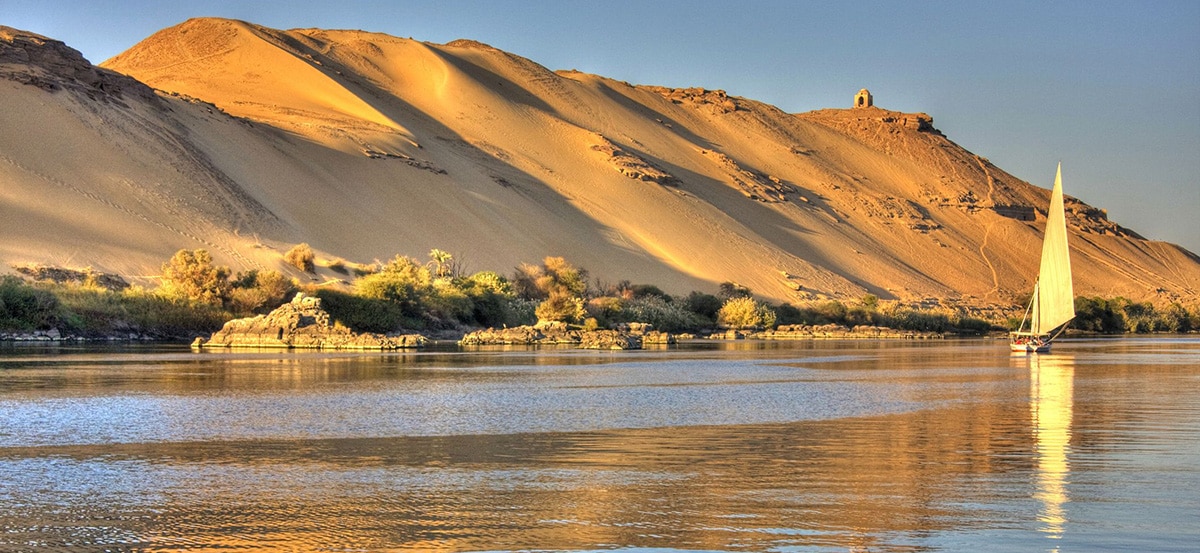
One of the most famous rivers in the world is undoubtedly the Nile river. Don't tell me it doesn't have a big halo of mystery, magic, which is not surrounded by fantastic, millenary stories. This is the Nile, a river whose name only arouses curiosity.
Could it be that he is forever linked to the Egyptians and their civilization? Could it be that we say its name and images appear of its meandering, brown course, surrounded by golden sands and temples that speak of other gods? It may be, but today we have to go deeper and learn a little more about this great river of africa.
The Nile River
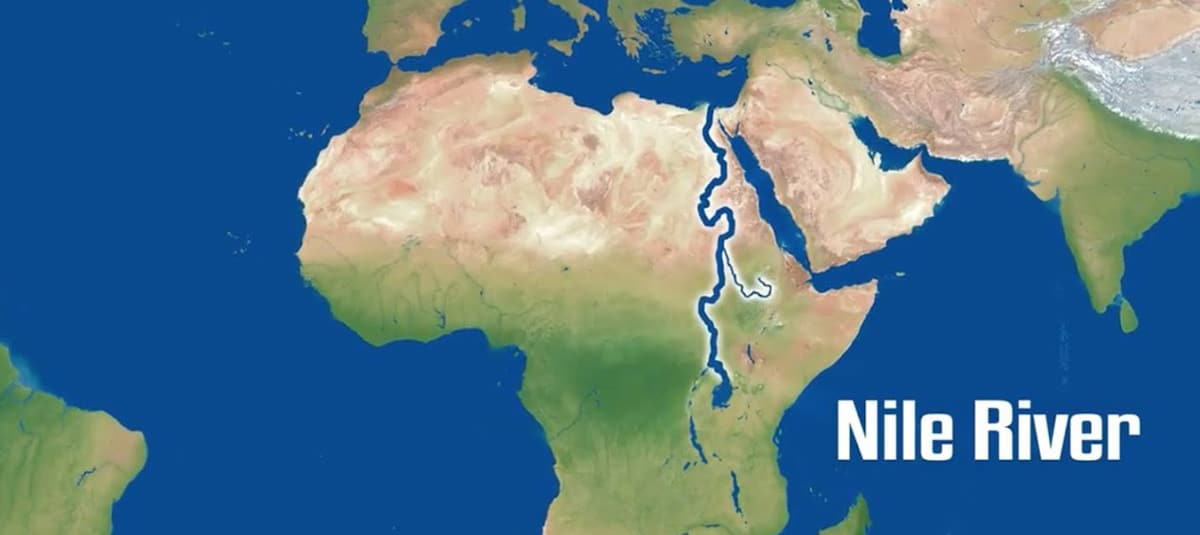
It is the largest river in Africa y cross ten countries from the continent until it empties into the southeastern Mediterranean Sea. It is in its huge and rich delta that Cairo and Alexandria lie. The Nile River measures 6.853 kilometers and so, behind the Amazon, it is the second longest river in the world.
From different explorations Lake Victoria appears as its first source, but it is necessary to know that the lake has several tributary rivers of considerable size. Among them, the Kagera River is the most important. There is some controversy around this issue, it is this river or another, so the discussion remains open.
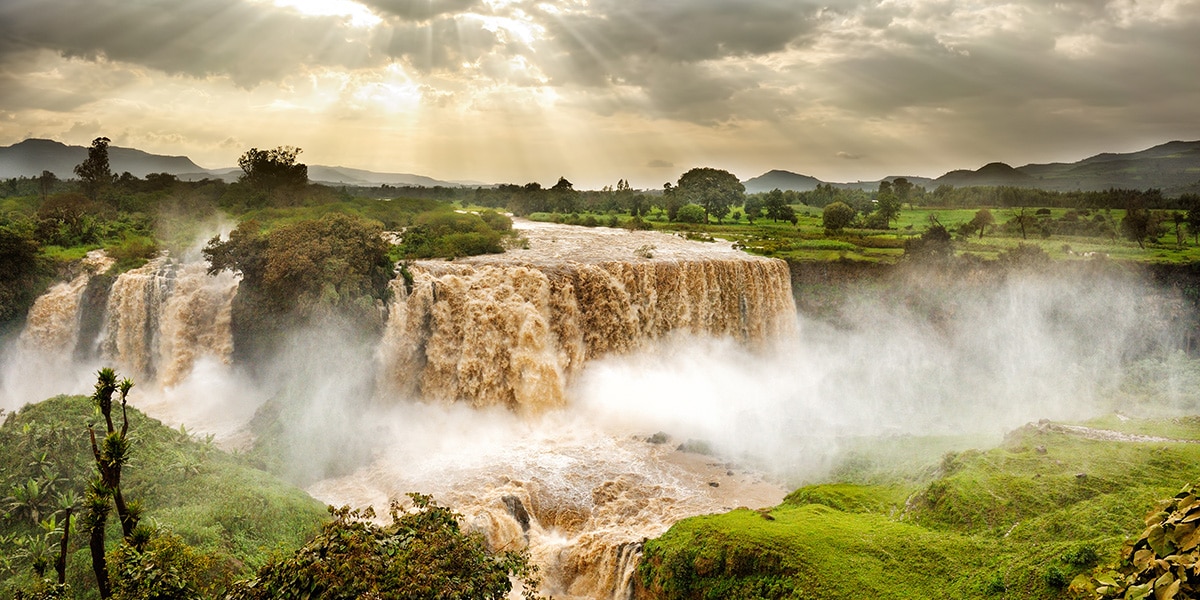
The truth is that although knowing its origin is a bit difficult, following its course is not so difficult once it takes shape. It leaves Lake Victoria at Ripon Falls in Uganda and becomes the Victoria Nile for around 130 kilometers until it reaches Lake Kyoga. The last part of the river, about 200 kilometers, begins on the west shore of the lake, flowing west as well, making a big turn to the north later to reach the Karuma falls.
From there it crosses the Murchison Falls, reaches Lake Albert and forms a delta. After leaving the lake the river crosses Uganda and is known as the Nile Albert. It thus reaches southern Sudan, converges with the Achwa River and changes its name and color a couple of times due to the clay suspended in its waters. In fact it is known as the White Nile For this. Thus, he enters Sudan and meets the Blue Nile.
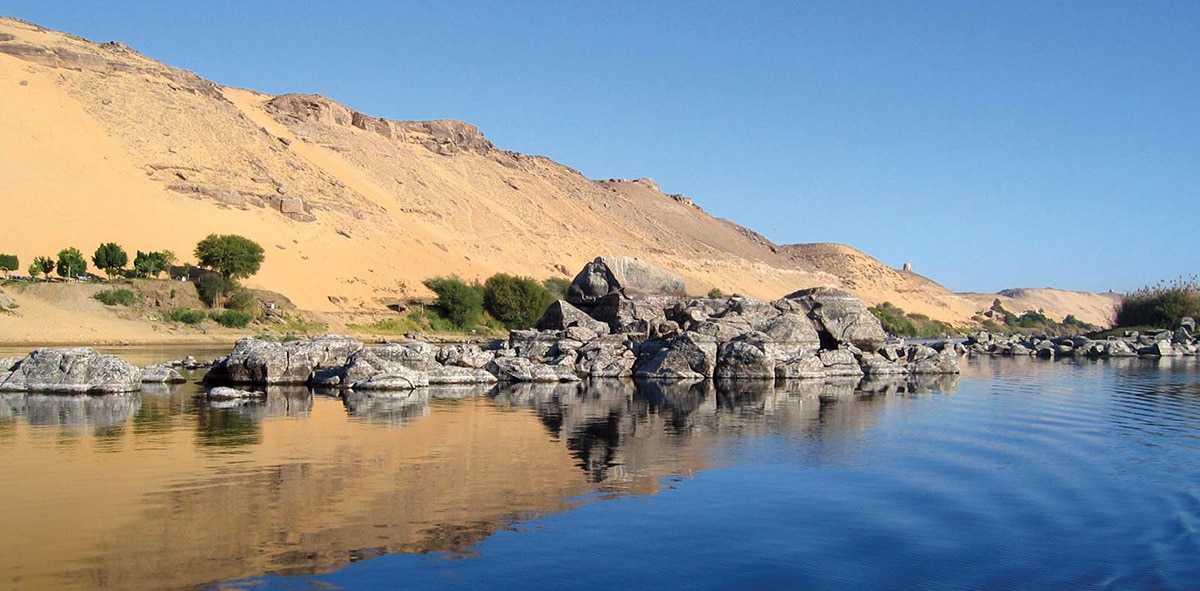
Through Sudan the course of the river is curious, with six waterfalls and a divided course until it enters Lake Nasser, largely already under the Egyptian flag. It is here, beyond the Aswan dam, at the northern limit of this lake, that the Nile returns to its historical course, diverted by the same dam. Finally, it is north of Cairo that it is divided into two branches that flow into the Mediterranean Sea. The Rosetta Branch is to the west and the Damietta Branch, to the east, forms the Nile Delta.
Summarizing, the Nile forms three main courses: the Blue Nile, the Atbara and the White Nile. The name itself, Nile, derives from the Greek Neilos or latin Nilus, believed to have a Semitic root meaning valley or valley river. For a long time the fact that the river, unlike other rivers, flows from south to north and floods in the hot season of the year was a mystery for many centuries, but this was precisely what allowed the development of the towns.
The Nile and history
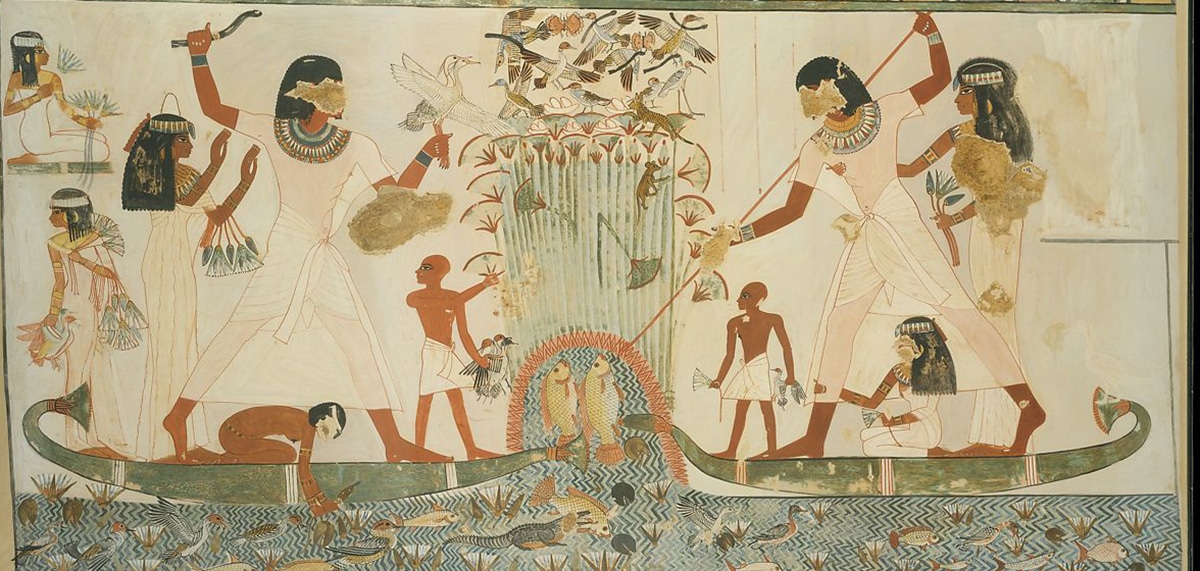
Having clarified these data about the Nile River, the truth is that is the soul of Egypt, at least from ancient Egypt. It has determined, guided, the life of these lands since the Stone Age. Obviously, with the changes our planet has undergone over time.
For the Egyptian civilization it has been fundamental. The river surpasses its banks twice a year and deposits sediments there that make it very fertile. Here the ancient Egyptians grew wheat, papyrus and other seeds crucial for the development of a people facing famines. Also, the river was a communication and trade channel with other peoples, which at some point generated economic stability that was also beneficial for the growth of a people.

Beyond food, commerce and communications, the river Nile was spiritually special to the Egyptians. Pharaoh, it was believed, controlled, with Hapis, the floods. Furthermore, the river was the route between life and life after death. To the east was the place of birth and growth and to the west was death.
All the tombs are, then, west of the Nile. Also, the ancient calendar of the Egyptians was based on the three cycles of the river, each season with four months, related to the enrichment of the land, sowing and harvesting.
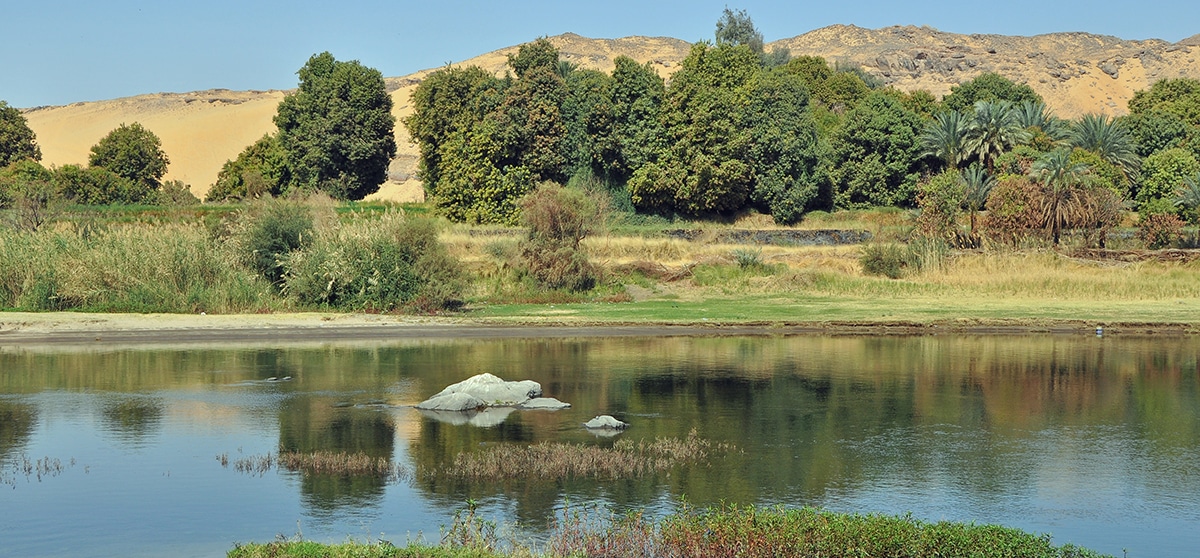
What animals and what plants live in the Nile? It depends on the area, the irrigation and the amount of rain. There are tropical rains on the river in certain areas, and that plus the heat produces denser forests with great variety of tropical trees and plants such as bananas, ebony, bamboo, or coffee bushes. There are also savannas with finer and more sparse vegetation, with medium-height trees and grasses with perennial herbs.
In Sudan it rains more and there are lands that flood so that is where the papyri, tall bamboo, water hyacinths… Further north it rains less and then the vegetation is scarce and at one point the desert is born, with vegetation that dies after the rains. In the case of Egypt, the vegetation near the Nile is almost entirely the result of irrigation and cultivation.
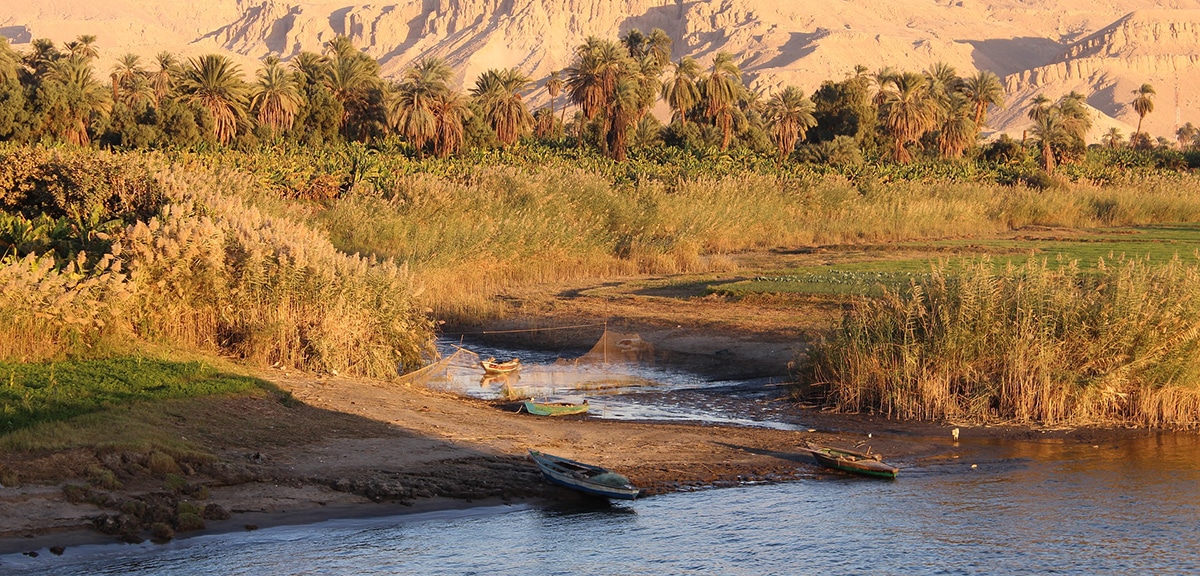
Regarding the fauna of the Nile there are many varieties of fish throughout the river system: perch, catfish, tiger fish. The truth is that most of the river fish are migrants but since the construction of the Aswan dam they have disappeared or dwindled.

As well there are crocodiles, in most of the Nile, although they have not reached the northern lakes of the Nile basin. Among other reptiles there are turtles, lizards and at least 30 species of snakes, half poisonous. The hippo? Once its population was abundant throughout the river but today it is only found in the south.
Geography, history, fauna, flora. The river affects all of this and in turn, the river is affected by these factors as well. The human being, in fact, has produced perhaps the greatest transformation of the Nile River in its history: the Aswan Dam. The dam was completed in 1970, It is 111 meters high with a crest of almost four meters and a volume of more than 44 million cubic meters. Lake Nasser is its reservoir with 169 billion cubic meters of capacity.
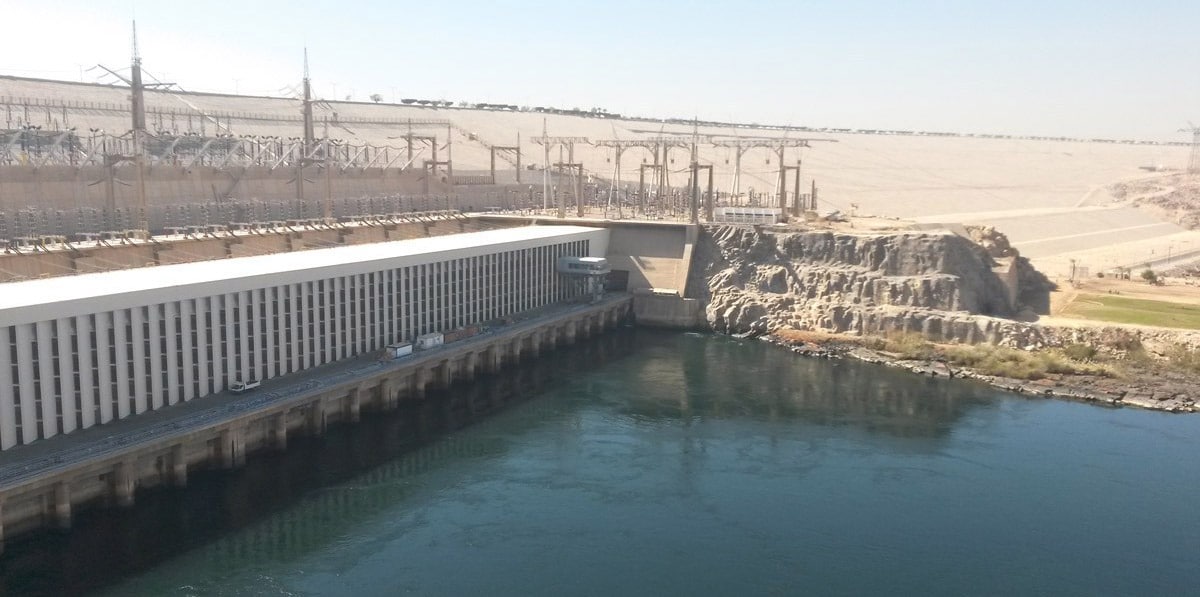
Its construction required the re location of the ancient temple of Abu Simbel, on pain of being underwater forever. Also many towns had to be relocated, both in Egypt and Sudan. With this construction, for the first time in history, the Egyptians were able to control the floods of the river and maximize the use of its waters.
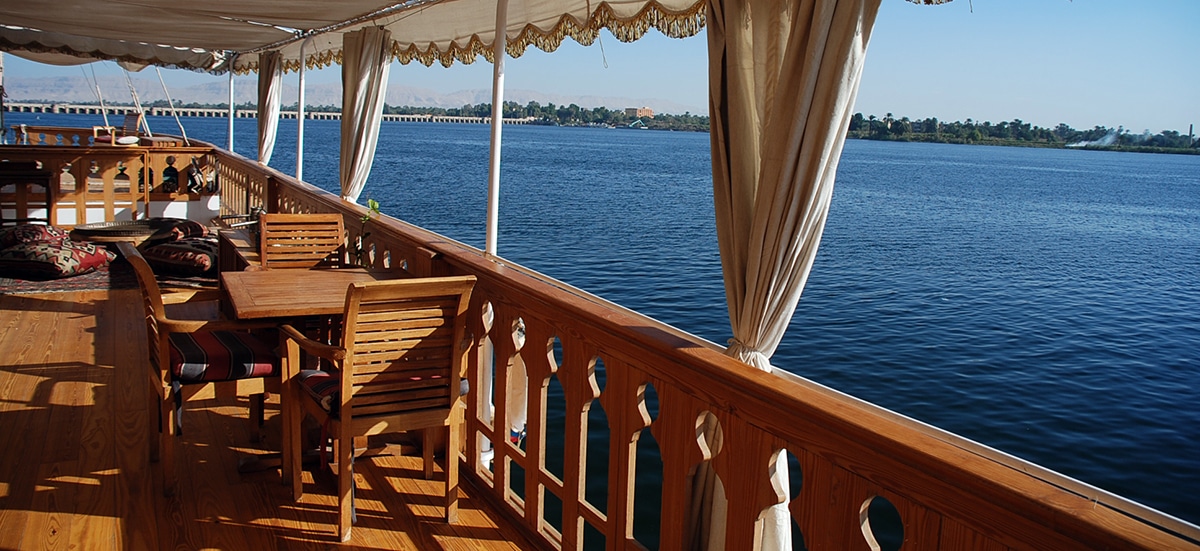
As you see, the river Nile is a treasure of Africa. When you go to Egypt, do not forget to take a tourist walk through it, in traditional boats or on a cruise. Look at the stars from the Nile, look at the coasts, the temples, the sun in the sky. Feel for a moment, in the heart of the story.